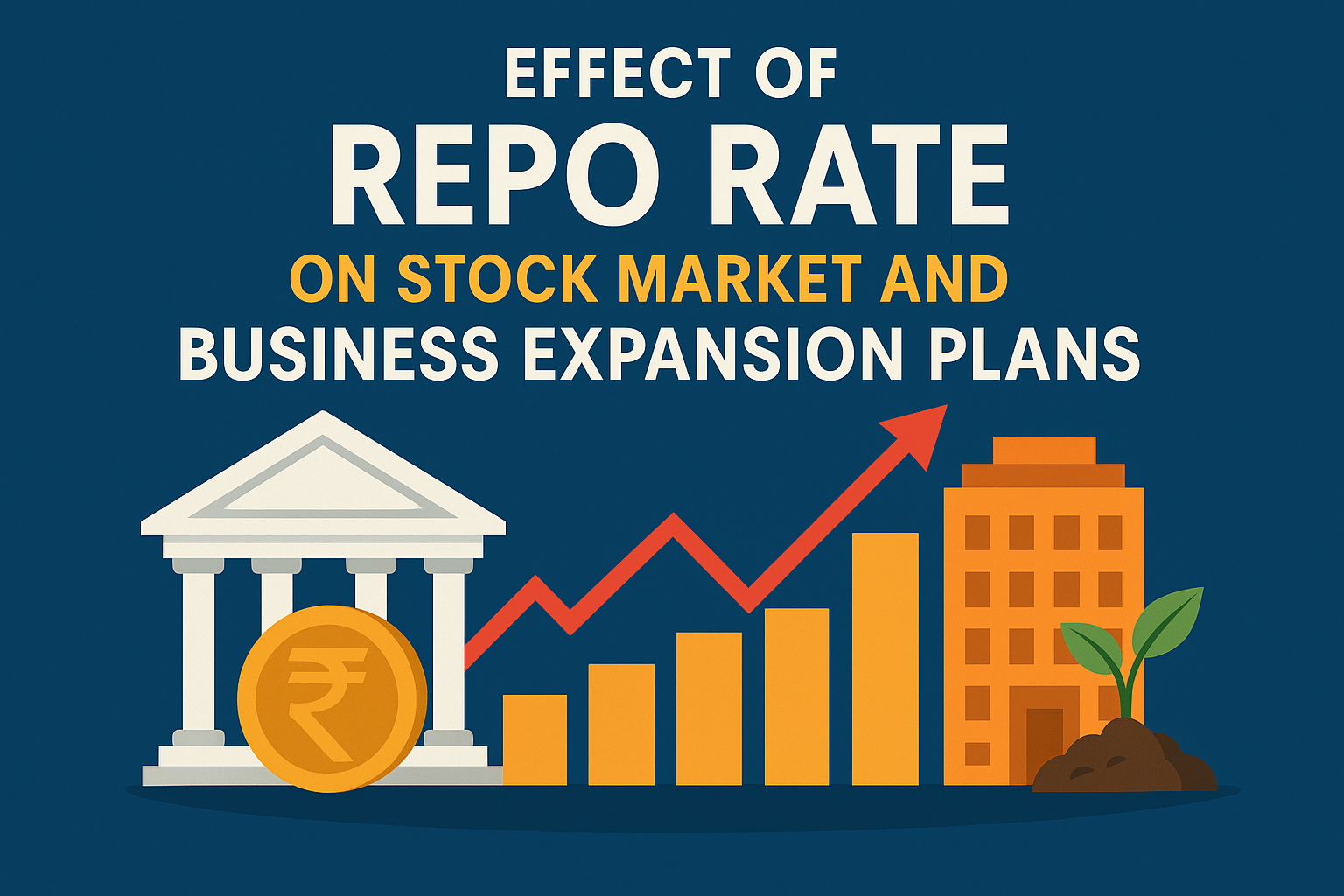Effect of Repo Rate on Stock Market and Business Expansion Plans

As the RBI’s Monetary Policy Committee (MPC) convenes, the focus sharpens on potential repo rate changes. Following previous reductions, market expectations are high for the central bank's next move.
For the stock market, repo rate cuts typically lower the cost of capital, encouraging borrowing and investment, which can lift corporate earnings and investor confidence. Rate-sensitive sectors such as banking, real estate, and automobiles often lead the rally, benefiting from cheaper credit and increased consumer demand.
On the corporate front, reduced borrowing costs can tip the scales in favour of greenlighting expansion projects, even as ongoing global trade wars continue to disrupt supply chains, increase input costs, and create uncertainty for export-oriented industries. These external shocks affect investor confidence and corporate planning, complicating the RBI’s task of balancing growth and inflation.
Repo Rate Cuts and the Transmission Lag
When the RBI changes the repo rate, it doesn’t just affect the cost of borrowing overnight for financial institutions; it adjusts the risk-reward balance across different assets. The immediate effect happens in the money market, where overnight rates adjust quickly. However, the more significant impact is seen over weeks or even months as banks and non-banking financial companies (NBFCs) reassess their lending rates, companies reconsider their investment plans, and investors adjust their expectations for future earnings.
This transmission is often uneven as lending rates tend to adjust faster than deposit rates. Since India’s economic growth is unfolding against a backdrop of persistent global trade frictions, the RBI’s repo rate cuts can help offset some of these pressures by lowering domestic borrowing costs. But it’s also worthwhile to note that this cannot fully insulate the economy from global shocks.
How Markets React to Rate Cuts
Historically, successive repo rate cuts have buoyed equity markets by lowering corporate borrowing costs and boosting consumer demand. Yet, when rate cuts are anticipated and priced in, the immediate market impact tends to be muted, shifting focus to corporate earnings and external risks. The magnitude and sustainability of market gains depend on several factors: whether the rate cut is anticipated, the broader macroeconomic context, and external risks.
Stock Market
The stock market can sometimes rise when investors believe that lower borrowing costs will help companies increase their profits. Sectors like banking, real estate, and automotive tend to benefit the most from lower interest rates. However, if the market had already anticipated the rate cut, the impact might be minimal.
Bond Market
In the bond market, rate cuts make newly issued bonds less attractive because they offer lower interest rates. As a result, older bonds that offer higher rates become more valuable, leading to an increase in their prices.
Rupee Value
An increase in money supply due to rate cuts can sometimes weaken the rupee against the dollar. This devaluation can create concerns for investors, as it may signal economic instability or inflation.
Repo Rate and Business Growth Plans
Repo rate cuts enhance liquidity in the financial ecosystem. The RBI often introduces variable rate repo operations to inject additional funds into the system, improving credit availability for companies with strong balance sheets.
Cost of Capital Drives Investment Decisions
High Repo Rate: Expansion becomes expensive. The internal rate of return (IRR) on new projects may not justify the higher financing costs. As a result, companies may defer or cancel capital expenditure plans.
Low Repo Rate: Borrowing becomes viable. Even marginal projects start to look profitable due to a reduced interest burden, encouraging investment.
Funding Availability Improves with Lower Rates
When the repo rate drops, financial institutions are more willing to lend, and at better terms. This flow of funds enables companies to move forward with growth initiatives with confidence.
Repo Rate and Business Confidence
There’s often a psychological element at play. The repo rate not only alters financial conditions but also affects business confidence. Higher rates can indicate tightening, causing businesses to delay hiring and expansion. Lower rates suggest a growth focus, sending a positive signal that the economic environment is conducive to business.
Conclusion
The repo rate is far more than just a technical term from the RBI’s monetary policy handbook. For Indian businesses and investors, it functions as a barometer of financial ease or constraint. An easing monetary stance signals a deliberate shift by the RBI to prioritise growth support. For investors, the repo rate trajectory offers important cues, though they must balance optimism with vigilance on external risks.